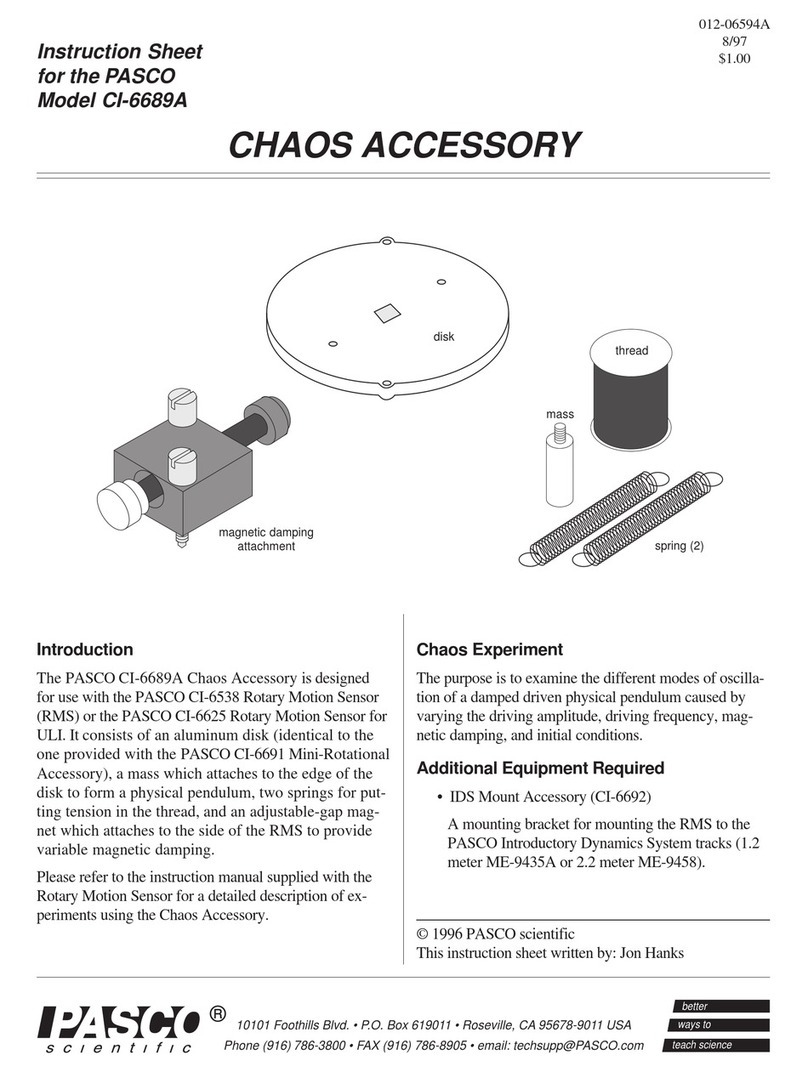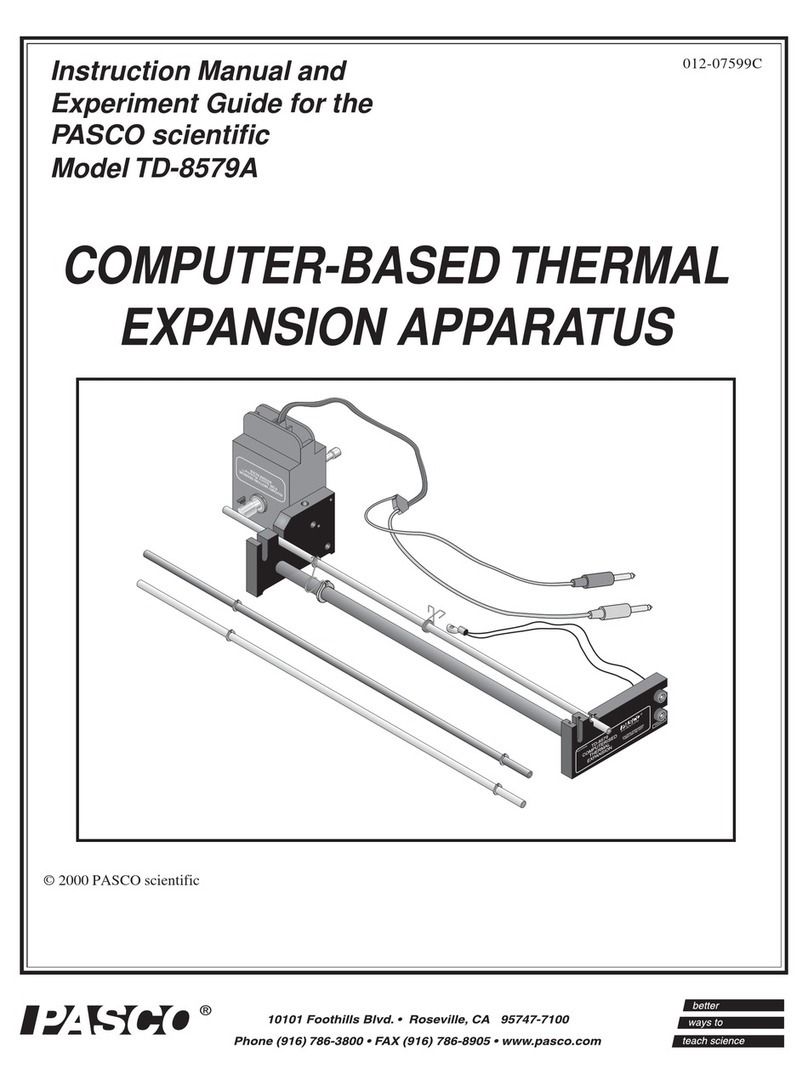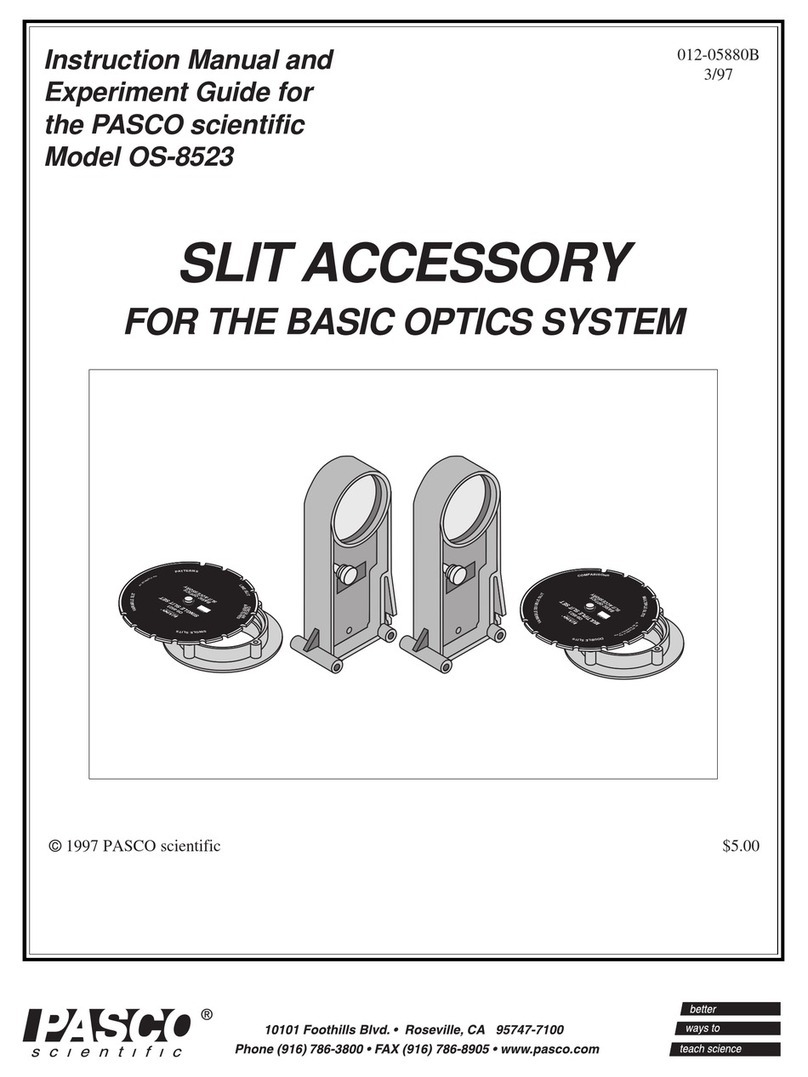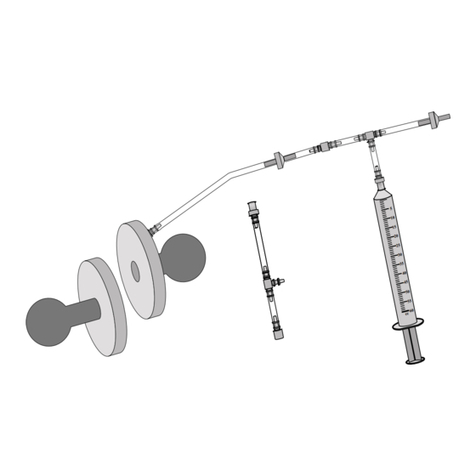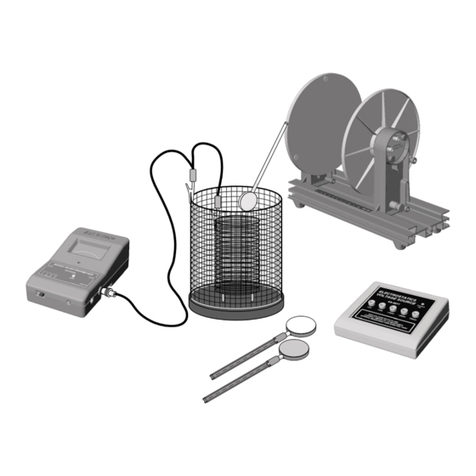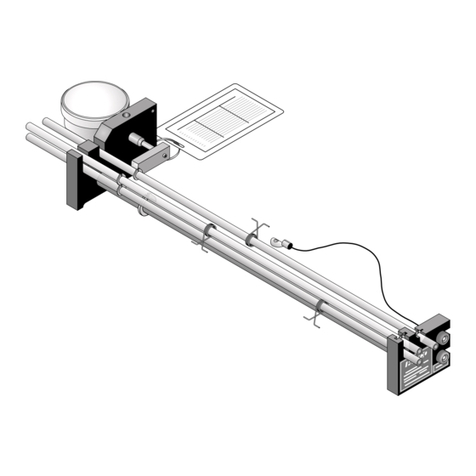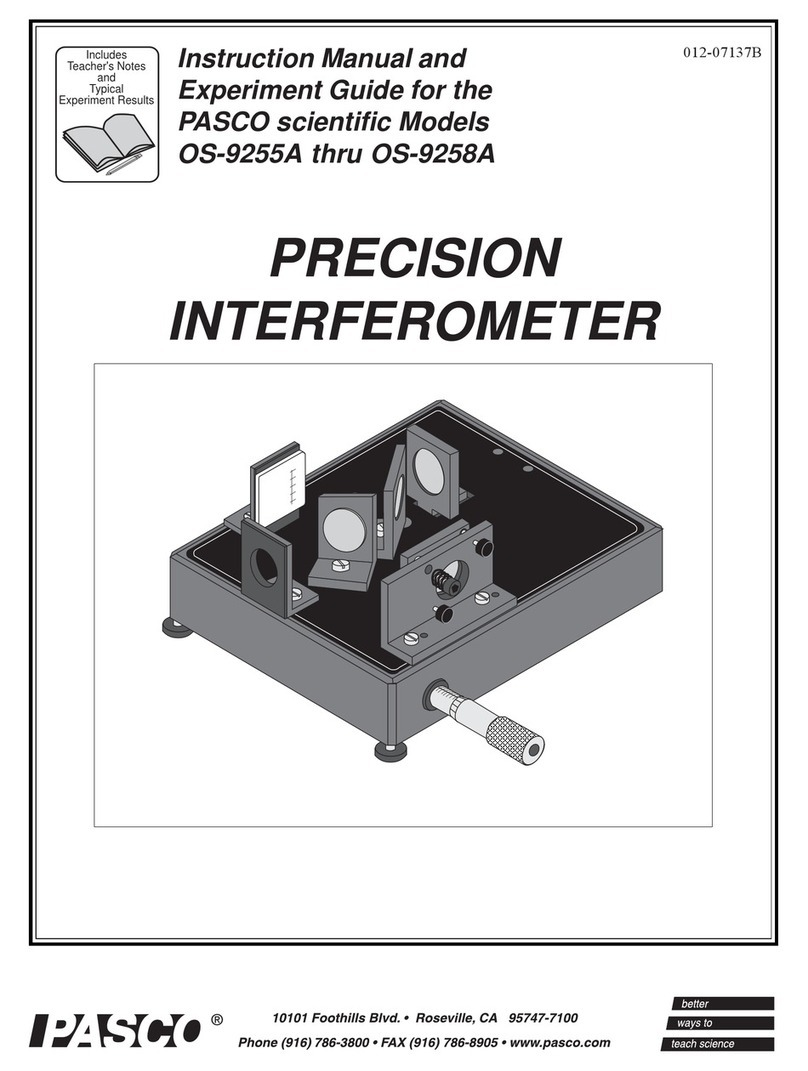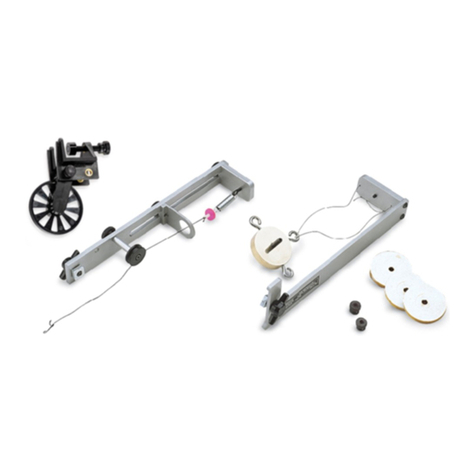
1
012-04695D Thermal Radiation System
Radiation Sensor
Introduction
The PASCO Thermal Radiation System includes three
items: the TD-8553 Radiation Sensor, the TD-8554A
Radiation Cube (Leslie's Cube), and the TD-8555
Stefan-Boltzmann Lamp. This manual contains
operating instructions for each of these items plus
instructions and worksheets for the following four
experiments:
①Introduction to Thermal Radiation,
②Inverse Square Law,
③Stefan-Boltzmann Law* (at high temperatures),
④Stefan-Boltzmann Law* (at low temperatures).
* The Stefan-Boltzmann law states that the radiant
energy per unit area is proportional to the fourth
power of the temperature of the radiating surface.
In addition to the equipment in the radiation system,
several standard laboratory items, such as power
supplies and meters are needed for most experiments.
Check the experiment section of this manual for
information on required equipment.
If you don't have all the items of the radiation system,
read through the operating instructions for the equip-
ment you do have, then check the experiment section
to determine which of the experiments you can per-
form. (A radiation sensor is required for all the
experiments.)
The two posts extending from the front end of the
Sensor protect the thermopile and also provide a
reference for positioning the sensor a repeatable
distance from a radiation source.
Specifications
Temperature Range: -65 to 85 °C.
Maximum Incident Power: 0.1 Watts/cm2.
Spectral Response: .6 to 30µm.
Signal Output: Linear from 10-6 to 10-1 Watts/cm2.
The PASCO TD-8553 Radiation Sensor (Figure 1)
measures the relative intensities of incident thermal
radiation. The sensing element, a miniature thermo-
pile, produces a voltage proportional to the intensity of
the radiation. The spectral response of the thermopile
is essentially flat in the infrared region (from 0.5 to 40
µm), and the voltages produced range from the micro-
volt range up to around 100 millivolts. (A good
millivolt meter is sufficient for all the experiments
described in this manual. See the current PASCO
catalog for recommended meters.)
The Sensor can be hand held or mounted on its stand
for more accurate positioning. A spring-clip shutter is
opened and closed by sliding the shutter ring forward
or back. During experiments, the shutter should be
closed when measurements are not actively being
taken. This helps reduce temperature shifts in the
thermopile reference junction which can cause the
sensor response to drift.
ä
NOTE: When opening and closing the
shutter, it is possible you may inadvertently
change the sensor position. Therefore, for
experiments in which the sensor position is
critical, such as Experiment 3, two small sheets
of opaque insulating foam have been provided.
Place this heat shield in front of the sensor when
measurements are not actively being taken. Figure 1 Radiation Sensor
Banana Connectors:
Connect to millivolt meter
Thumbscrew: Loosen to
reposition Sensor or to
remove Sensor from stand
Shutter
Shutter Ring: Slide
forward to open
shutter
